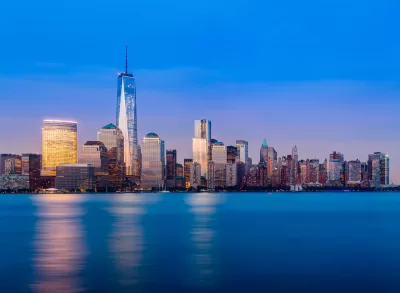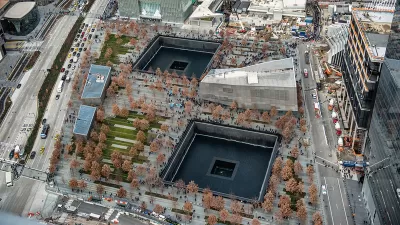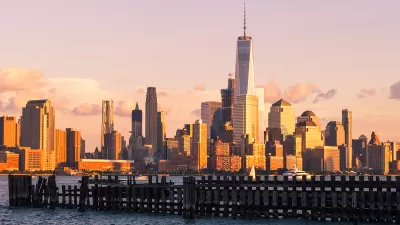Despite predictions that the events of September 11, 2001 would be the end of skyscrapers, U.S. cities are building more tall buildings than ever.

In the days following 9/11, "[a] Chicago developer told Chicago Tribune architecture critic Blair Kamin that American cities shouldn’t allow new skyscrapers that could 'be viewed as a magnet for future terrorism,'" and Americans wondered whether they would ever feel safe in tall towers again. Yet since 2001, "a dozen towers have gone up in Chicago that top 700 feet," writes John King, and other cities are seeing similar rates of construction.
According to Carol Willis, director and curator of the Skyscraper Museum in New York, "there are strong forces that cause towers to grow when there are good economic conditions. They’re weeds." As the rebuilt towers went up in place of the fallen World Trade Center, "[p]eople were reminded that tall buildings can express the spirit and potential of large cities." Today, the area surrounding Ground Zero "is ringed with towers that include the 1,776-foot One World Trade Center, the nation’s tallest building."
"In terms of a city’s daily life, the best towers are the ones that give something to the public. They’re approachable, with shops and cafes and nooks that are open to people who never enter the high-rise lobby." In San Francisco, says King, "when you walk along Folsom Street, or cut through landscaped mid-block plazas that didn’t exist before, the skyline show is secondary to the pedestrian environment slowly starting to emerge." According to Brian Lee, a consulting partner at Skidmore Owings & Merrill in Chicago, "[b]uildings should be meaningful for your time. If it’s just arbitrary shaping, that’s super-disappointing."
FULL STORY: 9/11 was supposed to end the age of skyscrapers. Instead, there are more now than ever

Study: Maui’s Plan to Convert Vacation Rentals to Long-Term Housing Could Cause Nearly $1 Billion Economic Loss
The plan would reduce visitor accommodation by 25,% resulting in 1,900 jobs lost.

North Texas Transit Leaders Tout Benefits of TOD for Growing Region
At a summit focused on transit-oriented development, policymakers discussed how North Texas’ expanded light rail system can serve as a tool for economic growth.

Using Old Oil and Gas Wells for Green Energy Storage
Penn State researchers have found that repurposing abandoned oil and gas wells for geothermal-assisted compressed-air energy storage can boost efficiency, reduce environmental risks, and support clean energy and job transitions.

Santa Barbara Could Build Housing on County Land
County supervisors moved forward a proposal to build workforce housing on two county-owned parcels.

San Mateo Formally Opposes Freeway Project
The city council will send a letter to Caltrans urging the agency to reconsider a plan to expand the 101 through the city of San Mateo.

A Bronx Community Fights to Have its Voice Heard
After organizing and giving input for decades, the community around the Kingsbridge Armory might actually see it redeveloped — and they want to continue to have a say in how it goes.
Urban Design for Planners 1: Software Tools
This six-course series explores essential urban design concepts using open source software and equips planners with the tools they need to participate fully in the urban design process.
Planning for Universal Design
Learn the tools for implementing Universal Design in planning regulations.
Ascent Environmental
Borough of Carlisle
Institute for Housing and Urban Development Studies (IHS)
City of Grandview
Harvard GSD Executive Education
Toledo-Lucas County Plan Commissions
Salt Lake City
NYU Wagner Graduate School of Public Service




























